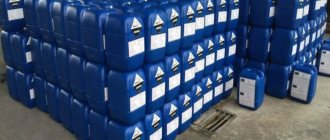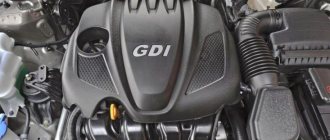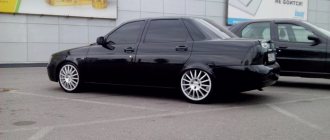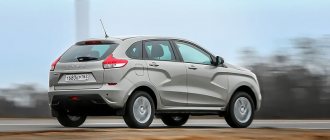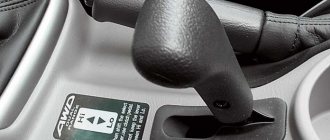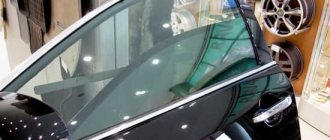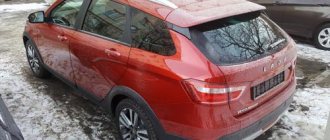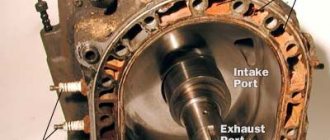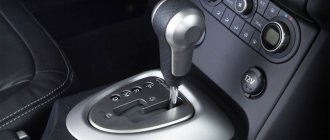Currently, there is a widespread campaign for environmental protection in EU countries. Millions of cars around the world emit large amounts of harmful substances into the atmosphere every year. Of course, in the city, refusing to travel by car is hardly possible, but reducing damage from exhaust emissions seems to be a completely feasible task. For this purpose, appropriate regulations and standards have been developed. But year after year they are only becoming stricter, which has become a real problem for automobile concerns. This led to the advent of AdBlue urea and SCR technology. At first, automobile concerns tried to change the diesel fuel supply and gas distribution systems in such a way as to reduce the volume of hazardous compounds in the exhaust gases. However, later this task became much more complicated. But the method of selective catalytic neutralization has come to the aid of manufacturers, in which special equipment is installed on the car, responsible for injecting urea into the exhaust system, as a result of which the negative impact of exhaust gases on the environment is greatly reduced.
What is urea for a diesel engine
The word urea itself means a substance that contains uric acid salts - the end product of mammalian metabolism. It is actively used in agriculture, but is not used in its pure form in the automotive industry.
For diesel engines, a special solution is used, consisting of 40 percent aqueous urea solution and 60 percent distilled water. This substance is a chemical neutralizer that reacts with exhaust gases and converts harmful carbon oxides, hydrocarbons and nitrogen oxides into an inert (harmless) gas. The reaction converts harmful exhaust into carbon dioxide, nitrogen and water. This fluid for use in the exhaust gas cleaning system is also called AdBlue.
Most often, such a system is used in commercial vehicles. The truck will have an auxiliary tank, the filler neck of which is located near the fuel tank filler hole. The truck is filled not only with diesel fuel, but also a urea solution (a ready-made liquid that is sold in cans) must also be poured into a separate tank. Substance consumption depends on the type of fuel system and how efficiently the engine operates.
Typically, a modern car (by the way, a large number of passenger cars that use heavy fuel also receive such a neutralization system) can process from two to six percent of urea from the total amount of fuel consumed. Due to the fact that injection is controlled by high-precision electronics, and the operation of the system itself is leveled by NO sensors, you need to add a reagent to the tank much less often than refuel the car itself. Typically, refueling is required after approximately 8 thousand kilometers (depending on the volume of the tank).
The fluid used to operate the exhaust system cannot be mixed with diesel fuel, since it itself is not flammable. Also, large amounts of water and chemicals will quickly damage the high-pressure fuel pump (its operation is described here) and other important components of the fuel system.
What is urea for diesel
Attempts to remove one of the components of exhaust gases lead to an increase in the content of the other. If you try to get rid of soot in diesel exhaust, harmful nitrogen oxide will begin to go off scale and vice versa. Designers developed filters to combat soot, which began to be installed in the fuel system of diesel engines. To neutralize harmful nitrogen oxide, it was necessary to come up with a fundamentally new system involving the use of urea.
Diesel urea, sold in car dealerships, is a liquid consisting of water and a chemical compound that decomposes into ammonia and carbon dioxide. The ammonia obtained from this mixture can be used to neutralize hazardous emissions. This process takes place in a special SCR catalyst.
Urea consumption depends on engine size, so trucks consume much more of the compound than cars. But, contrary to the negative expectations of motorists, the use and maintenance of such an exhaust gas purification system is relatively inexpensive, especially for passenger cars.
Why is it needed in a diesel engine?
Modern cars use catalysts to neutralize fuel combustion products. Their honeycombs are made of metal or ceramic material. The most common modifications inside are coated with three types of metals: rhodium, palladium and platinum. Each of these metals reacts with exhaust gases and neutralizes hydrocarbons and carbon monoxide under high temperature conditions.
The output is a mixture of carbon dioxide, nitrogen and water. However, diesel exhaust also contains large amounts of soot and nitrogen oxide. Moreover, if you modernize the exhaust system to remove one harmful substance, this has a side effect - the content of another component increases proportionally. This process is observed in different operating modes of the power unit.
To remove soot from the exhaust, a trap or particulate filter is used. The flow passes through the small cells of the part and soot settles on their ribs. Over time, this mesh becomes clogged, and the engine activates plaque combustion, thereby extending the filter's service life.
Despite the presence of additional elements in the exhaust system of a car, all harmful substances are not completely neutralized. Because of this, the harmfulness of the car engine does not decrease. To improve the environmental friendliness of transport, another additional system for purifying or neutralizing diesel exhaust gases was developed.
SCR neutralization is created precisely for the purpose of combating nitric oxide. It is installed by default in all cars with a diesel engine that meet the Euro4 standard and higher. In addition to a clean exhaust, thanks to the use of urea, the exhaust system suffers less from the formation of soot.
Main characteristics
Urea for engines is harmless to the human body. This is a colorless solution of urea in demineralized water. Urea is used as a consumable working fluid in modern diesel vehicles equipped with an SRC aftertreatment system, as a reagent that reduces the harmfulness of exhaust gases.
Compound
The system is quite complex and consists of a number of components:
- a tank in which a supply of urea is stored, replenished when refueling a car, the neck is brought outward using measures that maximally exclude the pouring of diesel fuel into it;
- AdBlue injection system control unit;
- a pump that creates solution pressure on the injection valve into the exhaust pipe in front of the SCR catalyst;
- nitrogen oxide content sensors before and after the catalyst;
- return line for draining excess from the dispenser with a valve;
- temperature sensors in the tank and injection lines;
- exhaust gas temperature sensor;
- urea level sensor in the tank;
- filters for the solution supplied to the dispenser;
- sensors and valves for adjusting the temperature of the circulating fluid;
- SCR catalyst.
The composition includes two control circuits - according to the amount of injected solution and its temperature. System components can be heated by liquid from the engine cooling system, which is monitored by the corresponding sensors and control unit. Wide changes in the temperature of urea, especially its freezing, should not be allowed.
The amount of solution supplied is determined by the control unit, which receives information about the engine operating mode, in particular about the temperature of the exhaust gases.
The required amount is measured by the metering valves at a fixed pump pressure, the rest circulates through the return line, simultaneously heating the tank. It is also possible to use electric heating of lines.
The catalytic converter is a honeycomb structure with noble metals deposited on ceramics, on the surface of which catalytic reactions occur.
The catalyst material itself is not consumed. When exhaust gases with active substances are blown through it, the output components are acceptable according to Euro-5 and Euro-6 standards.
In addition to process control, the unit also continuously monitors the technical condition of the system. If a malfunction is detected, the corresponding indicator on the dashboard lights up, indicating that the system is turned off.
The consequences can be different, from a significant limitation of engine output to the complete impossibility of starting it.
To get a consultation
We will answer any of your questions!
Leave your phone number and we will contact you as soon as possible!
Don't piss? I mean, it’s not scary... It’s really like filling up the washer fluid. But everything unfamiliar is scary. The most frightening thing is what will happen when AdBlue runs out?! You can drive without washer, but without urea?! That's right - question. At my own peril and risk, I drove almost dry trying to figure out WHAT diagnostic messages the car would give out. Got it. All photos below.
The first message - the first bell - Top up AdBlue - on the central screen of the instrument panel between the tachometer and speedometer. The manual says that the minimum level at which the inscription appears is 2.4l. Yes. How much to fill? What is the consumption of this urea per 100 km of travel?
The tank volume is 35 liters - that’s what the dealer said at first. Then I corrected myself that my model has a 15 liter tank. The numbers in the manual are different! It says 11.5 or 25 liters... which one exactly? According to the indication in the maintenance menu, apparently 11.5l. Since after filling 10 liters the indication showed that the tank was full. One less question.
Read also: How to flush the idle air regulator
The car comes from the factory with a starting volume of urea of 10 liters.
General conclusions: 1. Consumption per 100 km is 0.1 liters. Or, more simply, a liter of urea for 1000 km of travel. Consumption greatly depends on the quality of the source fuel and driving style. I fill up at Gazpromneft. There are drivers on the site who get 2 liters per 1000 km. I drive mostly in Eco mode (pensioner mode, oh well, burgher mode). There is enough power and dynamics. Again, Eco is an extra drag for me when the cabin is full of kids. True, when necessary, to overtake or enter the acceleration lane, I switch to Sport. 2. From the first message to the car stop you can drive TWO tanks full of fuel. Verified. see below. 3. You can fill it yourself. There is nothing tricky. Only a funnel is needed. Well, be careful not to spill it on the paintwork. 4. It’s not worth buying for future use! Urea has an expiration date. Attention - when purchasing, pay attention to the expiration date! Feel free to take 6 months away from him. 5. There is currently a shortage of urea at gas stations. It's just not worth it. I found it only at the Rosneft gas station, two cans for 10 and 20 liters. For 1600 km while driving with a warning, I looked at the presence of urea at other gas stations in Moscow and the Moscow region. No. I saw a 20 liter canister once at Gazpromneft. But for a carabuse this is a lot. And after opening, the remaining liquid in the canister quickly turns into water and smelly gas. 6. Now the most important thing - why not piss?! It’s just that while I was smoking a topic in the forums, I was reading mischievous slogans about “the urea has run out, the car won’t drive, pee in the tank.” Urea freezes! Clean correct at -11 degrees. And any changes in concentration (by water or something else) will lead to an increase in the freezing point (i.e. it will start to freeze at -5 or at -1). It is claimed that in case of emergency you can top it up with distilled water 7. The most important conclusion is that on long trips around Russia and other “non-Germany” you should take a canister of urea with you... or get some money from truckers in fancy cars.
Read also: Manol oil 75w85 reviews
For those who decided to turn off the catalyst with urea, a little is written here about saving hedgehogs with the help of AdBlue. For those who still root for hedgehogs, here ZR conducts testing of AdBlue liquids. I think, as always, the tests have been purchased. But the info is useful.
I won't turn it off. I am for saving hedgehogs :). But seriously, if you want to make your country better, cleaner, make your city cleaner, difficult - make your home cleaner and better, difficult - start from the entrance, gimor - put things in order on the landing. In short, start with yourself. Again, when I come to a country house, there is AIR, and it’s cool that a running Mercedes DOESN’T SPOILE it. And this is worth a lot! And it costs only 300-1300 rubles every 10,000 km
